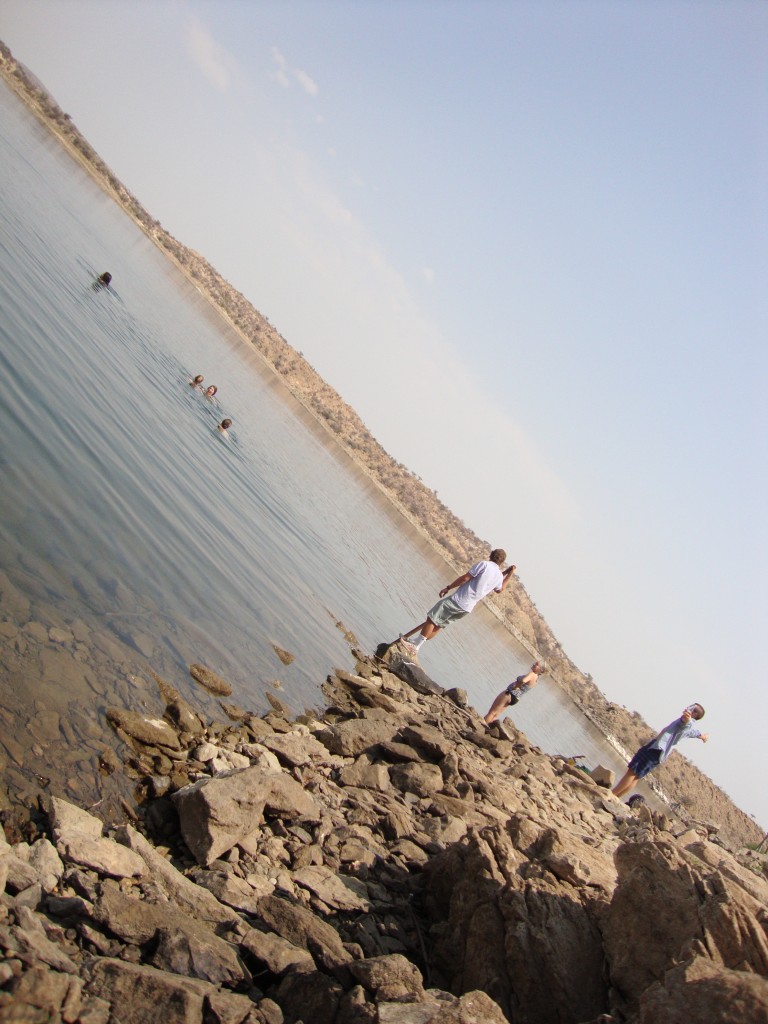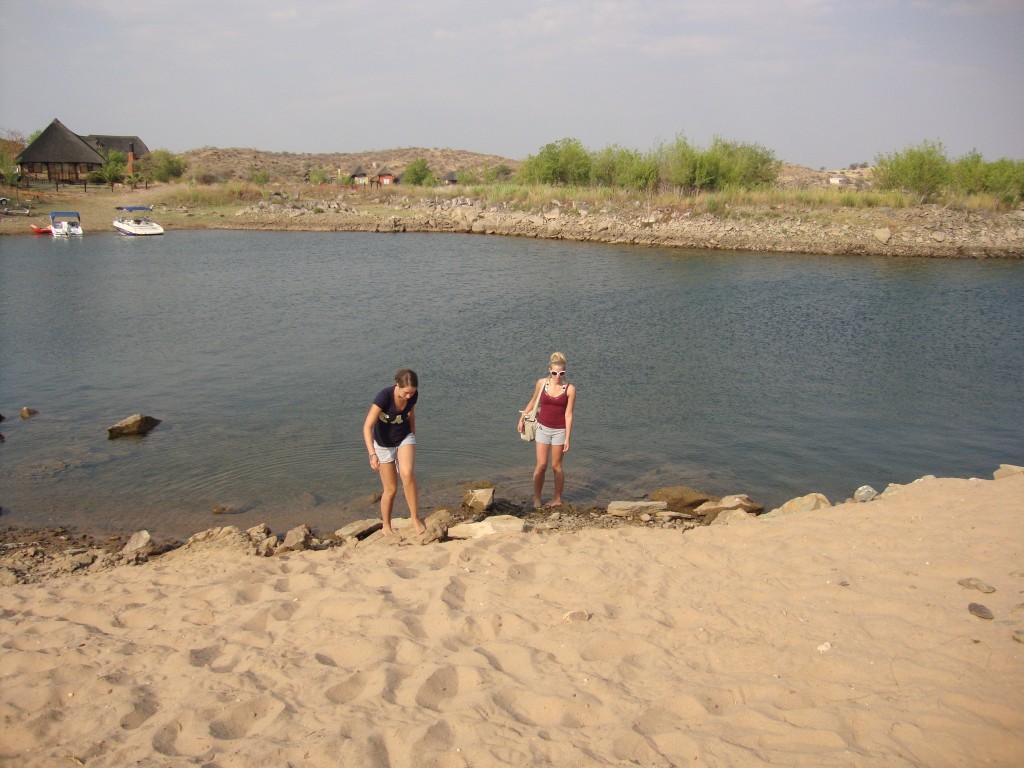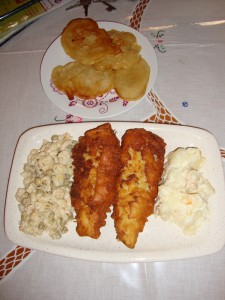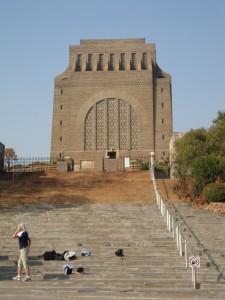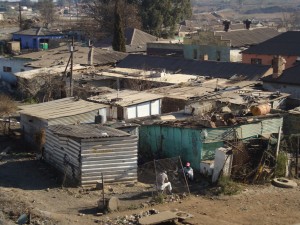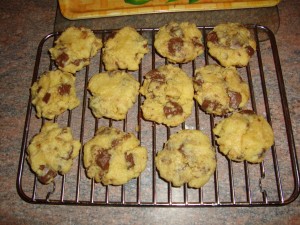
The chocolate chip cookies I made for my Urban Homestay family. Very yummy, despite having to alter some ingredients.
Whenever I’ve been abroad and staying with a host family, I have found that it is a good idea to bring along some of my favorite recipes. I have done it with past trips to France and Germany, and now to Namibia. Host families enjoy getting a little glimpse into the culinary aspect of American culture.
Five things to remember when cooking for your host families in Namibia:
1.) Not all of the same ingredients are available – avoid recipes with bizarre ingredients or recipes that require very specific name brands; get creative if things can be flexible (ex: there are no chocolate chips, but a chopped up chocolate bar works just as well)
2.) Accommodate cultural norms – Namibian meals are not complete without meat & vegetarianism is not widely understood. If you’re planning vegetarian meals (like me), be sure that there is a way to add meat to them for your host family, such as adding (a lot of) browned ground beef to a sauce or perhaps cooking an entirely separate meat dish in addition to your planned dish. Sometimes it works to do a dish with half meat, half vegetarian (think pizza).
3.) Cook with your host family whenever possible – this goes for the food that you are making and the food they make
4.) Bring a variety of dishes – main courses, salads, soups, sides, and desserts
5.) Don’t be offended if your meals are not outwardly well-received – some Namibians don’t care for very sweet things, but they will be glad that you put forth the effort to make something for them
**Helpful hint (that I wish I would have thought of before): Have recipes converted into metric units prior to trying to make them!
Some ideas for American recipes to make: Rice Krispy Treats, chocolate chip cookies, homemade macaroni & cheese, no-bake cookies, lasagna, brownies, French toast, pizza, homemade French fries, apple pie, American chop-suey, Shepard’s Pie, chicken parmesan
Bon appétit!
